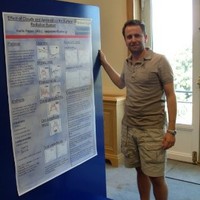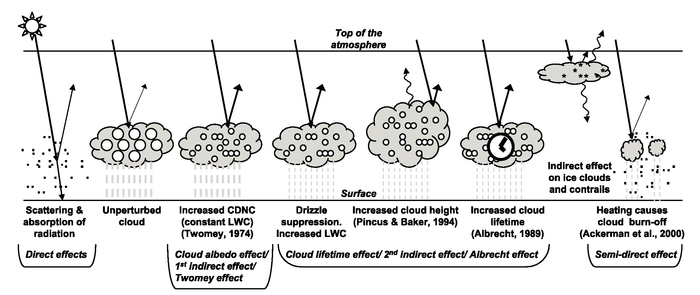WEMC Member Blog: How hydrological cycles impact the worldwide energy industry
The World Energy & Meteorology Council (WEMC) has members across the globe, from a variety of backgrounds and expertise, doing work on a range of important issues to strengthen energy and meteorology education, research and collaboration. We welcome posts from our members communicating the fantastic work that they do. We are delighted to share with you this opinion piece written by Vasilis Pappas, a WEMC member from Aachen, Germany, and Senior Meteorologist at Trianel GmbH. If you are interested in becoming a WEMC member (it’s free!), find out more by clicking here.

Vasilis Pappas
Published: 25th November 2019.
How hydrological cycles impact the worldwide energy industry
Vasilis Pappas (Senior Meteorologist/Senior Analyst, Trianel GmbH). Edited by Kit Rackley & Debbie Woodliffe.
Renewable energy sources such as wind and solar have been attracting a lot of publicity in recent years. But there is another type of renewable energy that’s becoming increasingly important for the worldwide sector. It’s called Hydropower and the value of it can’t be ignored. In this article, I’ll highlight three effects that the variation of hydrological cycles could have on the energy sector.
- The impact on emissions
We’ve seen reduced precipitation over long periods in Central and Western Europe which is unusual and has led to a tightening of the hydrological balance for several countries. This is especially true for areas that are highly dependent on hydrological inflow such as France, Switzerland, Austria or Scandinavia. Such situations can quickly lead to a sharp increase in wholesale energy prices as the lack of hydroelectric power is compensated by thermal sources such as natural gas and coal. So, the lack of consistent water inflow due to unnaturally dry periods can lead to an increase in CO2 emissions in the atmosphere. - The impact on coal transport
The same inconsistent water inflow also places tighter restrictions on coal boats. The lower water levels, particularly in the Rhine river, place more constraints on the amount of coal that can be transported via boat due to weight. In the bottleneck of the Kaub point in the lower Rhine, we’re seeing a new ‘lowest level’ recorded every year. The current lowest recording was a meagre 25cm on 28 October 2018 (Elektronischer Wasserstrassen-Informationsservice). This places a strain on the supply chain of Coal power plants, all because of reduced precipitation. - The impact on nuclear production
In the last five years, we’ve seen an increasing number of nuclear power plants which have been forced to ramp down production due to low river flows and high water temperatures (RTE Operational Data). The operating companies, such as EDF in France, cite ‘environmental reasons’ as the main contributing factor. This could be linked to:
(a) low flows that don’t allow for river water to be used for cooling the nuclear reactors
(b) high river temperatures that could increase further if the reactor worked at full capacity
(c) both of the above.
But the lack of rain and adequate water levels are a clear disruption to nuclear production.
The core problem
But we’ve got to question why these prolonged dry periods are occurring in Central and Northern Europe. A number of published peer-reviewed studies are linking climate change and the warmer atmosphere to the reduced precipitation efficiency. The so-called aerosol first and second indirect effects in particular are linked with reduced precipitation efficiency.
The first aerosol indirect effect explains how the heightened number of atmospheric aerosols increases the droplet number and decreases the droplet size in a cloud, meaning the critical size for precipitation isn’t reached (Lohmann and Feichter, 2005).
The second aerosol indirect effect explains how the increased number of aerosol particles and droplets lead to the reduced cloud lifetime. This therefore reduces the chances of a precipitating cloud (IPCC WGI Third Assessment Report).
The higher number of atmospheric aerosols which cause these indirect effects could be linked to increased urban pollution, when it comes to soot particles. Or it could be linked to widespread biomass burning, when it comes to black carbon particles.
But alongside this, we need to consider how the warmer atmosphere can hold more water vapour before saturation and precipitation. The result of this is that when the rain is finally formed, the amount of precipitation can be significantly higher than what it would be in an atmosphere with ‘normal’ temperatures. It’s these irregularities, climate issues and atmospheric changes that impact the hydroelectric, coal and nuclear energy sectors, which in turn increase the need for unsustainable energy sources. It’s a cycle. And it’s something we need to be aware of in the renewable energy industry.💡
References:
- Lohmann, U. and Feichter, J.: Global indirect aerosol effects: a review, Atmos. Chem. Phys., 5, 715-737, https://doi.org/10.5194/acp-5-715-2005, 2005.
You can follow Vaslis Pappas and his work on Twitter (@vpappasmet) and LinkedIn.
Disclaimer: This post represents the views of the author and do not necessarily reflect the view of WEMC or any other agency, organization, employer or company.
WEMC Member Guest Blogs & Contributions:
- How hydrological cycles impact the worldwide energy industry (November 2019) – Vasilis Pappas, Senior Meteorologist, Trianel GmbH
- Should every company be considered an ‘energy company’? (October 2019) – Michael Ferrari, Managing Partner & Principal of Atlas Research Innovations
- The Climate Pocketbook: An example of educational outreach from experts (August 2019) – Sebastian Sterl, Researcher on Energy & Climate, Free University of Brussels (VUB)
- Malawi-UK Teacher Partnership Focuses on Clean, Affordable Energy (August 2019) – Noel Banda, Meteorologist & Climate specialist, Malawi Department of Climate Change and Meteorological Services
- Global Wind Atlas wind resource maps now available for every country (January 2019) – Oliver Knight, Senior Energy Specialist, The World Bank
- Prescient Weather’s World Climate Service launches “significant upgrade” (December 2018) – Jan Dutton, CEO, Prescient Weather





